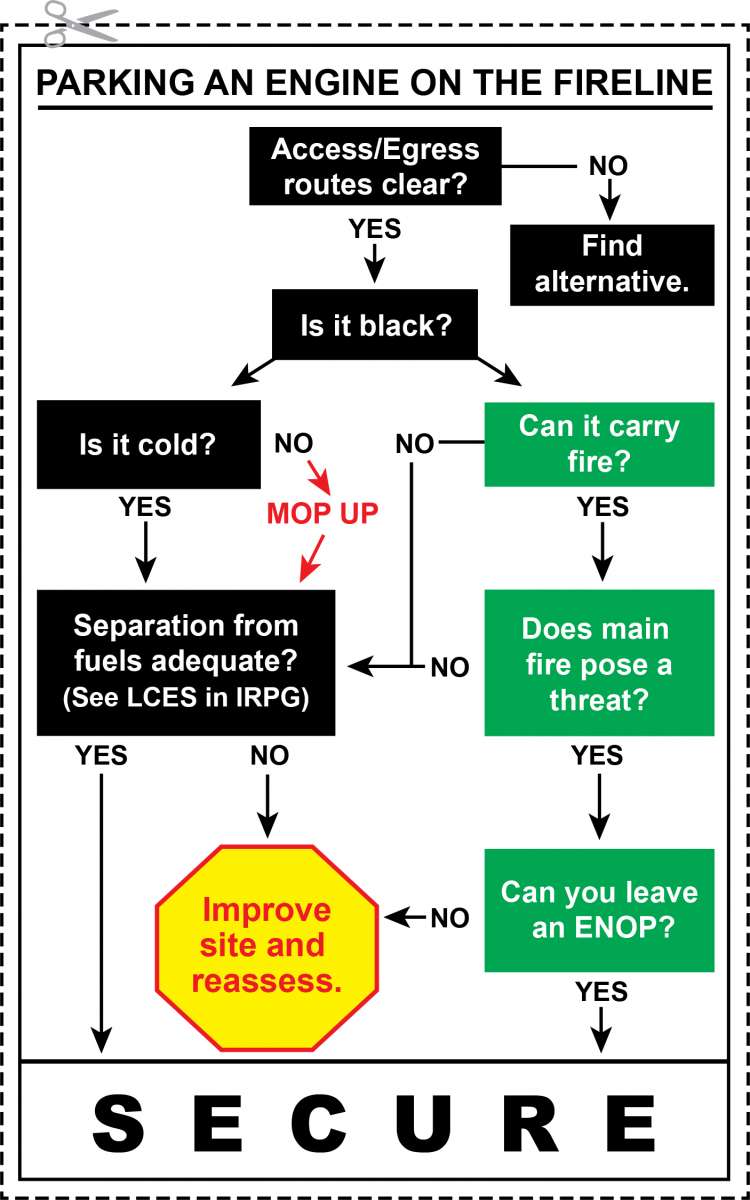
You’ve been engaged in mobile attack on the left flank of a fire for over an hour. Every time you come close to hooking the head of the fire, a wind pulse pushes it out of your reach. It seems the Incident Commander (IC) is asking for progress reports every five minutes. Ahead the fire is burning onto a steep rocky slope, looks like it’s hose packs from here…
When fighting wildland fire, there are occasions when crews must leave their engines and equipment to implement suppression tactics. In doing so, fire equipment remains the responsibility of all crew members and its safety must be seen to. In the heat of the moment, with pressures to get to work, it can be hard to remember to pause and think about things like where we park our vehicles.
When parking vehicles on or near wildfire incidents:
- What do you look for in a fireline parking spot? Look up, look down, look all around.
- Look for cold black, bare soil, sparsely vegetated areas, plowed fields, or other natural or human made barriers. Be careful to not get stuck in soft soils.
- Complete a walk around looking for ash pits, penetrating stobs, unburned adjacent fuel, snags, or other hazards that may damage the apparatus.
- Do not block the access or egress of others. Be careful to not block dozer lines, safety zones, or helispots. Back in and face your danger when turning around. Chock your tires.
- What types of situations may require you to park your vehicle in unburned fuels?
- What should be considered when leaving an individual with a fire vehicle?
The following mental checklist and flowchart can be used to ensure the safety of yourself and your equipment.
Is your truck S.E.C.U.R.E.?
Set parking brake
Environmental hazards mitigated
Chock the wheels
Under carriage inspected
Roll up windows
Ensure equipment is safe to leave

Download a printable version of the
Parking an Engine on the Fireline cutout to put in your vehicle.





